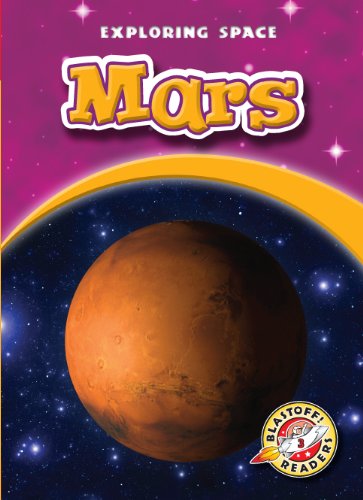-
Life on a Mountain
Laura Hamilton Waxman
Library Binding (Bellwether Media, Jan. 1, 2016)Chinchillas, pikas, and goats can all be found on mountains, climbing and scurrying around large boulders and steep slopes. Mountains not only provide homes for many living things, but they also affect weather patterns. Beginning readers will love navigating the pages of this book on the mountain biome! L
L
-
Rat Snakes
Colleen Sexton
Library Binding (Bellwether Media, Aug. 8, 2010)Did you know that rat snakes can see better at night than most other snakes? Their vision helps them catch insects, rodents, and other prey. Explore the many habitats of rat snakes, what rat snakes eat, and how rat snakes fight off predators in this informative title. K
K
-
The Life Cycle of a Ladybug
Colleen Sexton
Library Binding (Bellwether Media, Jan. 1, 2010)Ladybugs spend part of their life cycle as larva. Every day a ladybug larva eats about 30 tiny green insects called aphids. Young children will watch a ladybug go from egg to adult. L
L
-
The Solar System
Colleen Sexton
Library Binding (Bellwether Media, Jan. 1, 2010)The solar system is made up of planets, moons, asteroids, comets, meteoroids, and more. Young readers will learn about the bodies that make up the solar system and how they interact with each other. P
P
-
Copperheads
Colleen Sexton
Library Binding (Bellwether Media, Aug. 8, 2010)Living in parts of the Eastern United States, copperheads are named after the orange-brown color of their bodies. Students will learn about the diet, habitats, and physical characteristics of these poisonous snakes G
G
-
Life in a Wetland
Laura Hamilton Waxman
Library Binding (Bellwether Media, Jan. 1, 2016)Bogs, swamps, and marshes are all different types of wetlands. Many plants and animals rely on this biome for reproduction, safety, or simply a drink of water. Some need to adapt to this environment, like the mangrove trees that get oxygen by growing roots above the surface. Take a closer look at wetland critters and vegetation in this engaging title for developing readers! K
K
-
The Life Cycle of a Cow
Colleen Sexton
Library Binding (Bellwether Media, Aug. 8, 2010)Weighing around 1,300 pounds, an adult dairy cow produces about 90 glasses of milk every day! Young readers will learn the different stages of a cow's life cycle, watching as calves grow into heifers and then adult cows. K
K
-
The Life Cycle of a Butterfly
Colleen Sexton
Library Binding (Bellwether Media, Jan. 1, 2010)A female butterfly lays eggs on a leaf to begin the butterfly life cycle. The eggs hatch into caterpillars, and caterpillars form chrysalises to change into butterflies. Students will follow a butterfly as it grows from an egg into an adult. L
L
-
The Life Cycle of a Salmon
Colleen Sexton
Library Binding (Bellwether Media, Jan. 1, 2010)Adult salmon spawn at the end of their life cycle. They fight strong currents while swimming upriver to the place where they hatched. Young readers will follow a salmon from egg to adult. K
K
-
The Life Cycle of a Frog
Colleen Sexton
Library Binding (Bellwether Media, Jan. 1, 2010)The life cycle of a frog takes place in water and on land. It begins in spring with a male frog croaking a song to attract a female. Young readers will read about and watch an egg develop into a tadpole and then into an adult frog. L
L

